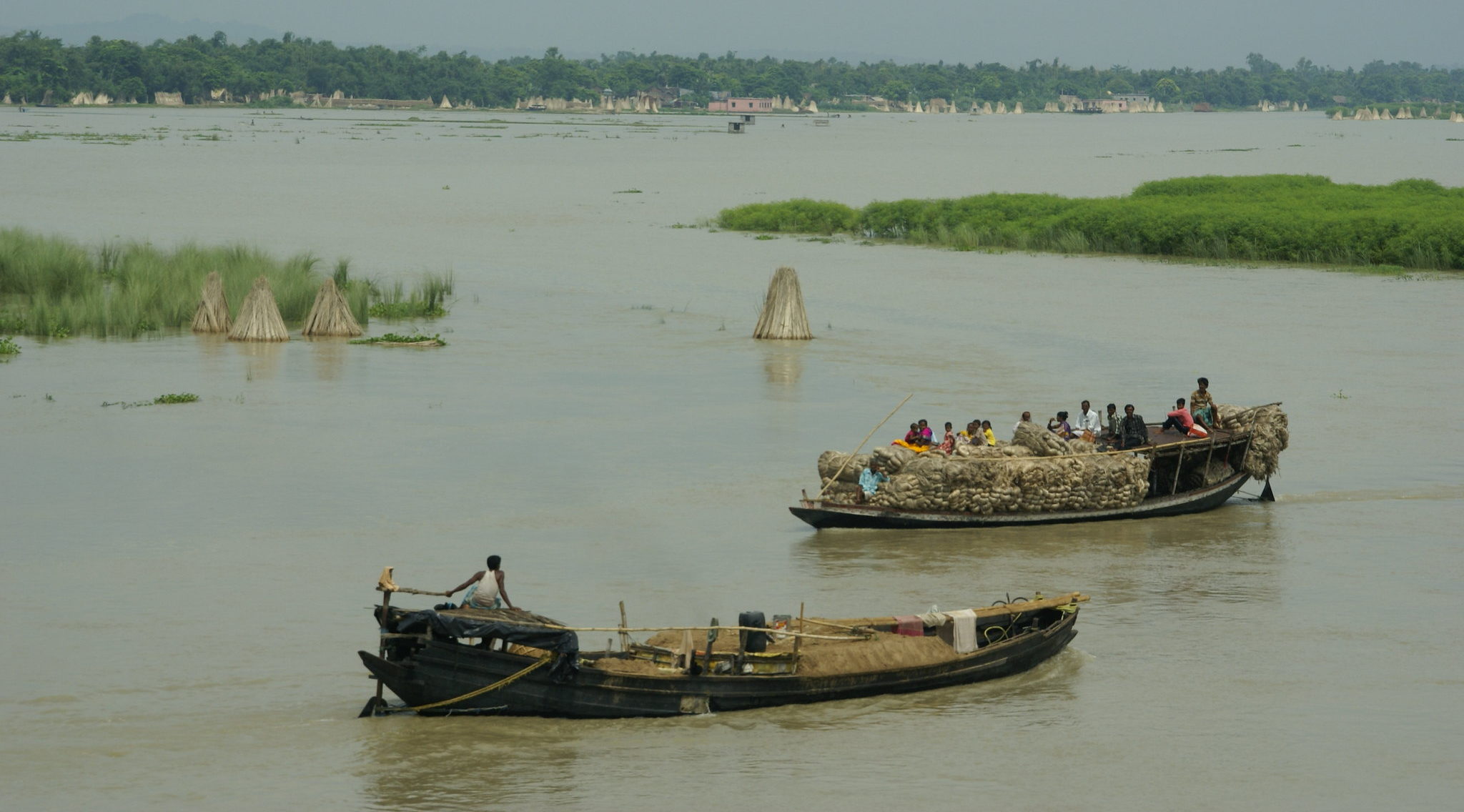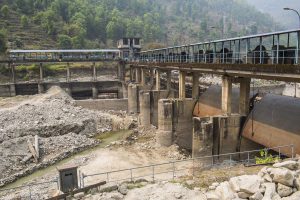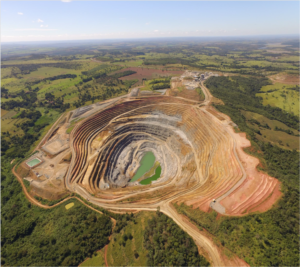The Ganga, which has nourished Indian civilisation for millennia, is fighting its biggest battle for survival downstream of Farakka. Increasing pollution coupled with the failure of cleanliness drives has turned the river and its banks into a dump. The World Wide Fund for Nature (WWF) has listed the 2,520 km long river as among the world’s most endangered.
One of the worst stretches is in Murshidabad district of West Bengal, where the Ganga’s biodiversity is being affected by constant human intervention. Many blame the Farakka barrage for the pathetic condition of the river. Sourced from a partly snow-bound catchment area of 1,008,500 sq. km, the Ganga has an average annual discharge of 11,811 cumecs at Farakka. Since 1975, the Farakka barrage diverts an average discharge of 1,046 cumecs from the Ganga into the Hooghly River, towards Kolkata, through a 38 km feeder canal.
The discharge of hot water from Farakka Super Thermal Power Station of NTPC at Dhuliyan in Murshidabad has been causing fluctuations in the water level and temperature, posing a danger to the aquatic life surviving on it.
Too hot to handle
Locals claim that the water released from the thermal plant is too hot to be touched during the early morning hours. Arif Sheikh, who lives close to the plant, says that it not possible to touch the water in summers, while it is pleasantly warm in winters.
“The water released from NTPC is very hot but still we come to take a bath during the winters. But it is difficult to touch the water during summers. We might be getting affected by diseases by taking a dip into the river as we have constant itching but absence of any medical check-up fails to identify the ailments,” he said. “The authorities should look into this and make alternative arrangements to stop the discharge of hot water into the river.”
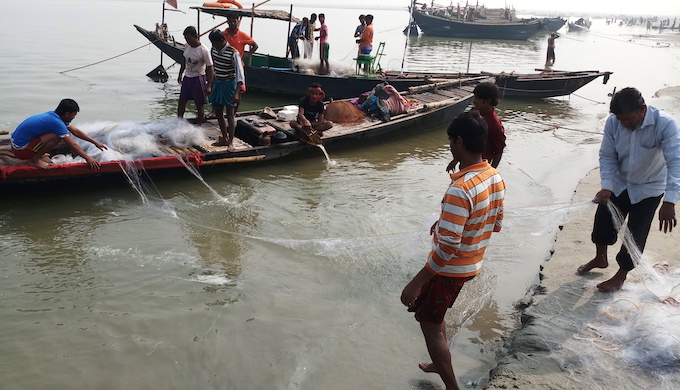
Fishers lament that the hot water discharge from NTPC is affecting aquatic life in the Ganga downstream. “I have been catching fish for the past 10-12 years. But the catch in the river has been dwindling each year. Earlier, we used to get around 20 kg fish everyday, which has now come down to 1-2 kg. It is becoming difficult to run our families as we solely depend on fish for our livelihood. The river is turning dry, may be because of increasing pollution and chemical laced hot water released by NTPC. Our houses have already been swallowed by erosion. We request the government to look into the matter or else the fishing community would completely migrate to other areas for livelihood,” said Subroto Biswas, a fisherman.
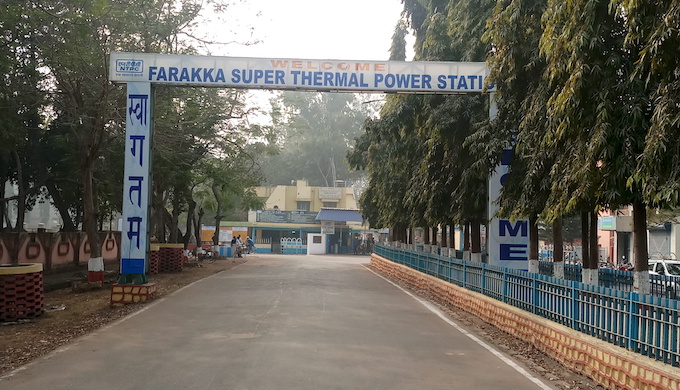
The small channels close to the plant, whose water gets mixed with the Ganga, are being used by the power plant as dumping ground for fly ash, contaminating the river. Farmers complain that fly ash has been destroying crops year after year, “The crops are getting affected because of the fly ash in the fields but the administration is taking no action despite being informed numerous times. We have been facing severe losses and have also filed a case against the NTPC seeking compensation. But nothing has been done,” rued Akbar Ali, 66, a farmer at Japukuria village at Dhuliyan, less than 20 km downstream of Farakka.
NTPC was forced to shut down five units of its power plant in 2016 due to the abysmally low level of water in the Farakka Feeder Canal.
The Farakka barrage has also worsened land erosion downstream by driving more water into the Hooghly. Various reports have suggested that the barrage was constructed without regard to the natural behaviour of the river in the Gangetic delta. According to reports, the Ganga annually carries more than 700 million tonnes of sediment at Farakka, of which about 300 million tonnes get trapped in a barrage pond. The water erodes the banks; the lack of silt means banks cannot be built naturally again. The process is leading to the sinking of the entire delta.
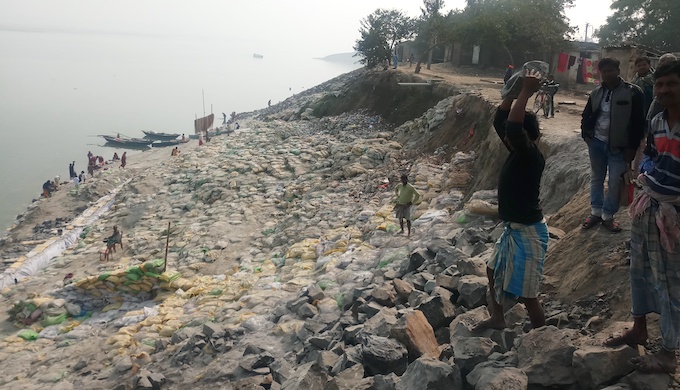
Mahbub Alam, an environment activist, says that sediment deposits have been creating small islands right in the middle of the river while blocking its natural flow, “People of Malda and Murshidabad are living in distress due to the land erosion. The sediments are responsible for it as they have blocked the natural course of the river and have led to the increase in depth of channels on both sides of the river. Subsequently, the water is entering the villages and hundreds of people are losing their land and houses. The situation is very alarming and I request everybody to save the river.”
Erosion havoc
Erosion has wreaked havoc in Malda and Murshidabad and has devoured hundreds of houses forcing people to migrate to other areas.

Anjuma Bibi, who lives in Muskinagar village of Murshidabad district, shudders to think of the moments when she along with her family had a miraculous escape after erosion devoured their house in the dead of a night, “The wooden bed on which I was sleeping suddenly started to slip away. I realised that our house was going into the river. I managed to pull my husband and my granddaughter out of the room and within seconds my house got cracked and plunged into the river. We lost all our belongings to the erosion. It has been three years since but we have received no help from the administration. The villagers helped us and gave us shelter in their house,” she said.
See: Photo essay: The nowhere people

Over 400 children who study at Muskinagar Primary School come with prayers on their lips and pounding hearts every day. The boundary wall of the school located close to the river has been swallowed by the river thrice in the past one year.
School authorities claim they have informed the administration several times about the looming danger to the lives of the children but nothing has been done. “We live in perpetual fear during the monsoon. I have already written to the state irrigation minister and other officials but have received no reply for the past two years. The administration has only thrown some stone bags as a stopgap measure but it is not enough. Hundreds of children in my school might lose their lives if nothing is done to resist the erosion,” said Obaidur Rahman, the school headmaster while pointing to the heap of bricks in the river that was once a school but was lost to erosion.
This article was first published in indiaclimatedialogue.net
